People spend approximately five hours every day looking at their phones — and that can lead to some serious text-neck aches and pains. Researchers at Harvard Medical Health predict that 7 out of 10 people will experience neck aches at some point in their lives.
Text neck can compress and tighten the muscle, tendon, and ligament structures in front of the neck, while lengthening the muscles, tendon, and ligament structures behind the neck, and overtime, that extra strain adds up.
Since ditching our devices isn’t really a realistic option, what we can do is make sure we exercise right and practice good habits to prevent the aches and pains associated with text neck.
1. Exaggerated nod
The exaggerated nod counterbalances the downward/forward head position by pulling your shoulders down and back, and increasing neck mobility.
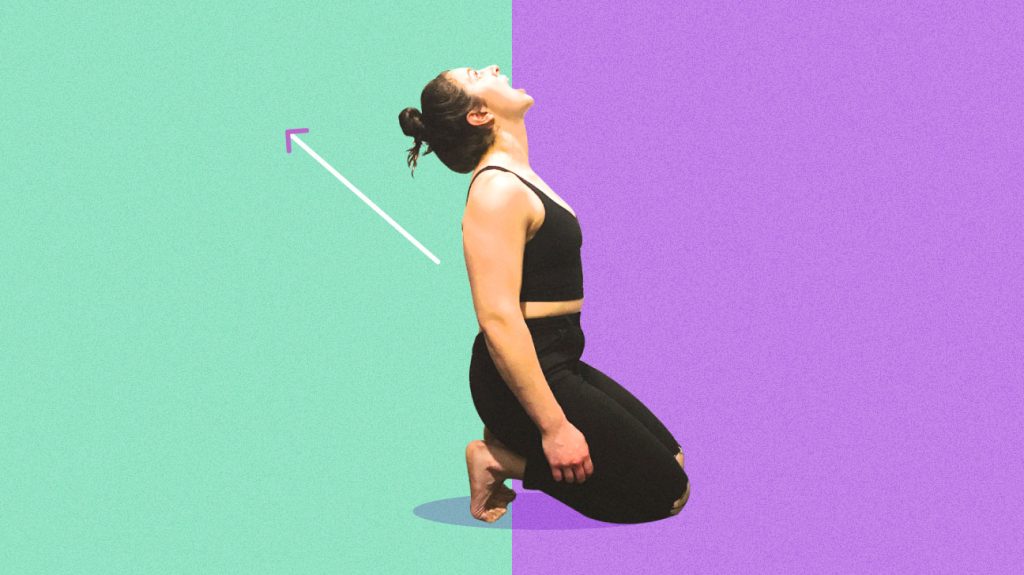
How to do it:
- Start by sitting at your desk or standing comfortably with your shoulders relaxed. With your mouth closed — teeth touching but not clenching — look up to the ceiling.
- Pause here and let your jaw relax and open your mouth. Now see if you can bring your head further back an inch or two (typically you can).
- Keep your head still here and bring your lower jaw to your upper jaw, closing your mouth. You should feel a stretch in the front of your neck.
2. Downward-Facing Dog
Downward-Facing Dog is useful for opening the anterior chest wall and shoulders — which are often rounded and tightened from excessive tech usage. This pose is all about upper-body strength, which means if you don’t have the shoulder strength you might compensate by scrunching your shoulders up to your ears. If you notice yourself doing this, actively draw your shoulder blades down your back, which will create space in your neck.
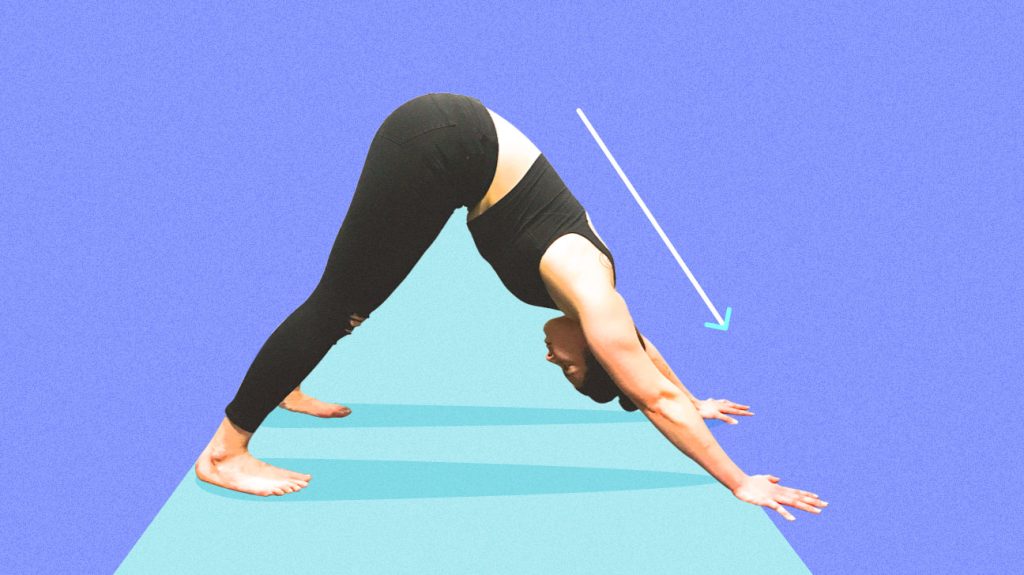
How to do it:
- Begin on all fours. Tuck your toes and lift your hips high, reaching your hip bones toward the ceiling.
- Reach your heels back toward the mat, but don’t let them plank on the ground.
- Drop your head so that your neck is long. As you stay here, make sure that your wrist creases stay parallel to the front edge of the mat.
- To alleviate the pressure on your wrists, press into the knuckles of your forefingers and thumbs.
- Breathe here for at least three deep breaths. Then release.
3. Cat-Cow
Your core and pelvis should drive the Cat-Cow flow: As you inhale you create an anterior tilt to the pelvis so that your tailbone is facing the ceiling, and as you exhale you create a posterior tilt so that your tailbone is turned toward the ground. This movement sequence helps increase spinal awareness, which is a large part of less-than-perfect posture.

How to do it:
- Start on all fours with your shoulders stacked over your wrists, your hips stacked over your knees, and the tops of your feet pressed into the ground. Look down a few inches in front of your fingers and lengthen from your head down to your tailbone.
- To begin the ‘cat’ phase, use your abs to curl your spine toward the ceiling while tucking in your tailbone (making the shape of a Halloween cat) as you exhale. Lengthen your neck and allow your chin to reach down and in, toward your chest, so your ears come down by your biceps.
- To begin the ‘cow’ phase, swoop and scoop your pelvis so your belly drops down to the floor as you inhale. Broaden across your shoulder blades, drawing your shoulders away from your ears, and lift your chin and chest to gaze up toward the ceiling.
- Cycle through Cat-Cow a few times, keeping stress and pressure out of the head and neck.
4. Padahastasana
Padahastasana stretches the neck and hamstrings, which means that it’s fighting text neck and hips that are tight from sitting all day at the same time.
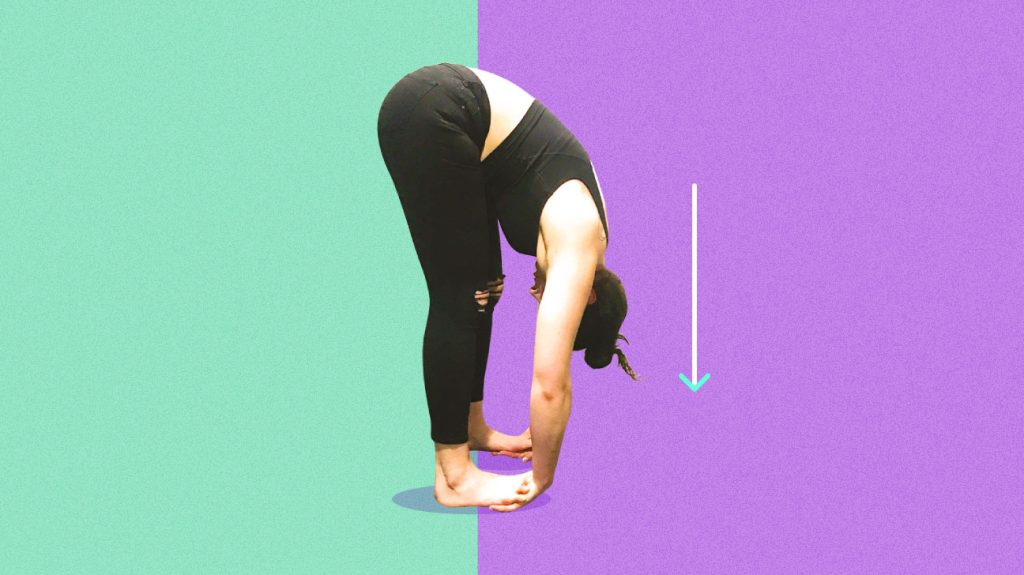
How to do it:
- Take off your shoes and begin with your feet hip-distance apart. Then, bend forward, letting your arms touch the floor. If it’s difficult, take your arms only as far as it’s possible without straining.
- Bend your knees and lift the balls of your feet off the ground to slip your hands, palms face-up, underneath your feet.
- Allow your toes to come right into your wrist creases. Press into your palm with the balls of your feet and relax your head. Breathe here for at least three deep breaths.
5. Bow pose
Bow pose helps to counteract slouched shoulders by opening them from the front, and strengthening them from the back.
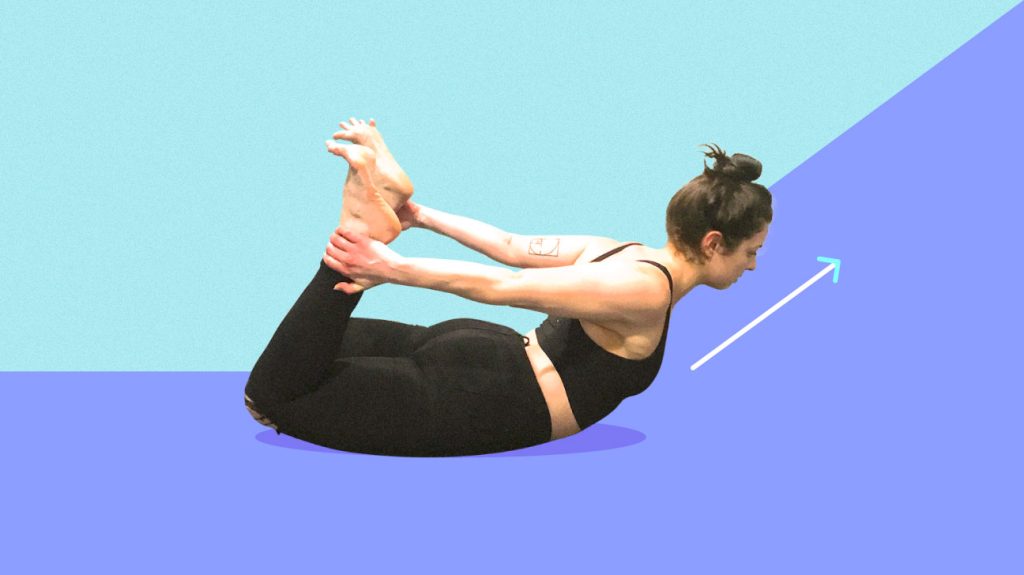
How to do it:
- Lie flat on your stomach with your chin on the floor and your hands resting on either side of you.
- Bend your knees and bring your heels as close to your buttocks as you can. Reach backwards with both hands and grab onto your outer ankles. As you inhale, lift your heels up toward the ceiling so that your chest, thighs, and upper torso lift up off the mat.
- To intensify the stretch, try to lift your heels higher while keeping your tailbone pressed into the mat. Look forward and draw your shoulders away from your ears.
- Hold this position for 10 breaths. Release on an exhale by slowly lowering your thighs, and then the rest of your body, to the ground.
6. Chin tuck
Chin tuck is a simple exercise you can do at your desk, at a stoplight, or even in a meeting at work. This simple stretch will help increase spinal awareness, while strengthening the neck muscles to help pull your head back into alignment.
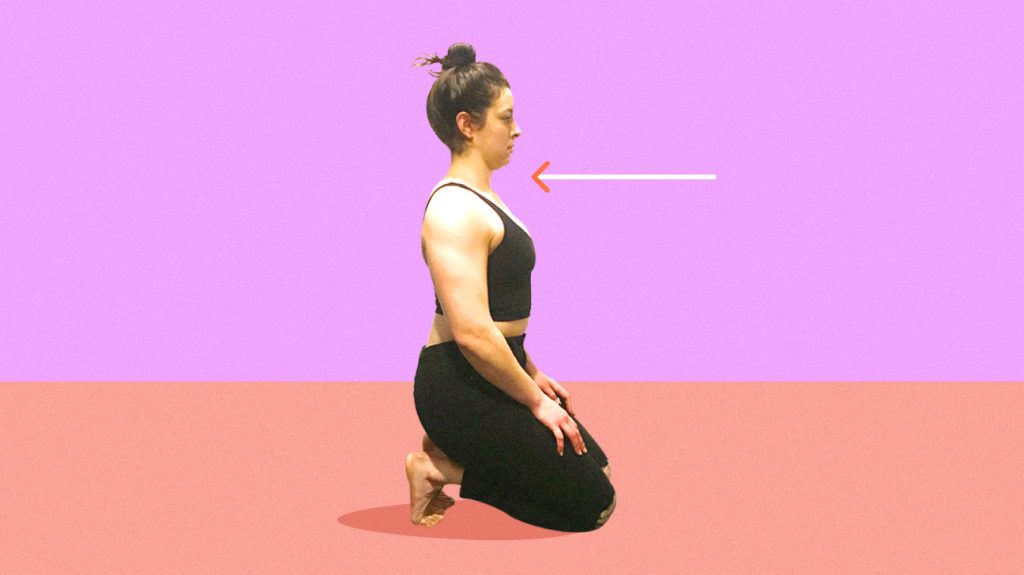
How to do it:
- Sit up tall in a chair and keep your chin parallel to the floor. Without tilting your head in any direction, gently draw your head and chin back, like you’re making a double chin. Be careful not to jam your head back. You should feel a stretch along the back of the neck.
- Now imagine there’s a string pulling your head upward like a puppet, and actively elongate your neck. Actively push the base of your skull away from the base of your neck. Keep your jaw relaxed and hold this position for 3 deep breaths.
- Release your chin forward. Repeat.
Please note that any advice in this article doesn’t replace personalized medical advice from a professional. If you would like to find out more tips that could help fix text neck, as well as start treatments for any back and neck related issues, email us at info@evolvevancouver.ca to book an appointment with one of our experienced chiropractors.